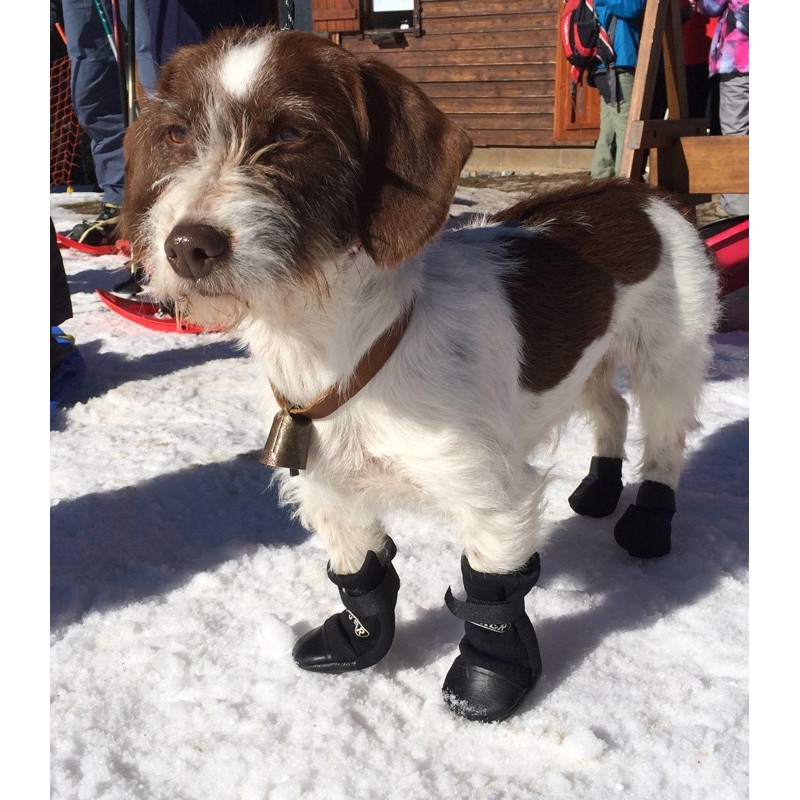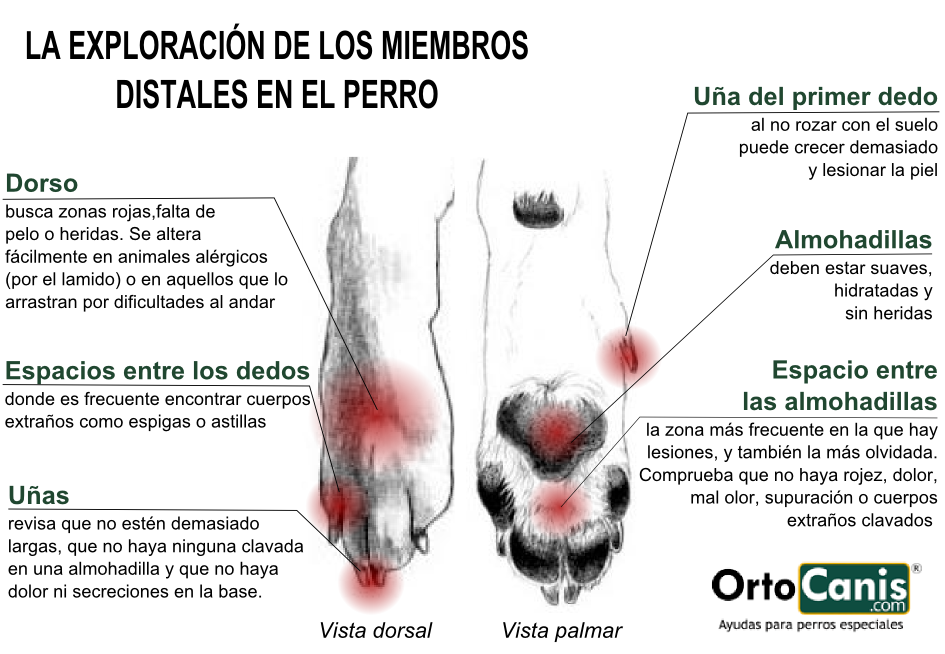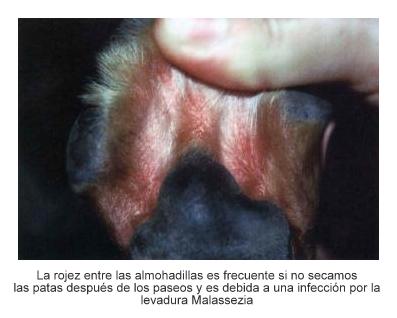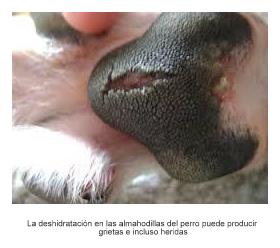As you probably already know, caring for the “feet” of a dog is very important. Often we neglect them, when in reality they can be the source of many problems. To give an example: something as serious as a limp without being able to support the limb could be the result of a piece of gum stuck between the pads left that has been left there for several days.
Therefore, it is very important to check your dog’s paws regularly. In addition, this inspection should be thorough, since the majority of problems are usually found in “hidden” places, like between the toes.
This is a guide on what to inspect to ensure you do not overlook anything:
Risk Factors
Allergies: usually entails licking the back of the “hands” as a result of the itching.
Leishmaniasis: may occur with excessive growth of the nails, along with other dermatological problems.
Heat: keep in mind that asphalt can reach dangerously high temperatures in summer, even though we do not notice it because of our shoes. Using booties for dogs can be a huge help.
Snow: the humid cold of the snow can hurt the pads and/or freeze the tips of the paws. It is highly recommendable to protect the paws, with protective creams or boots.
Dog "mountaineers": thorns are a dog’s worst enemy. They can penetrate the paw and move forward through the interior of the limb until finding an exit, such as the elbow. They can also get hurt from stones, sticks or sharp objects. It is very important to check our dog after a walk in the mountains. Again, using boots can minimize the risks.
Dog with orthopedic and/or neurological problems: all those who have problems walking run the risk of hurting the back of their paws due to dragging. To avoid this, use splints, proprioceptive correctors, or special harnesses and wheelchairs that prevent the limbs from dragging.
Dogs with a lot of fur between the pads: these tend to have dermatitis, especially if moisture collects in the area.
Here we have mentioned the most common disorders that affect the skin of a dog’s paws, but there are many more, from tumors to self-mutilations caused by emotional stress. For this reason any abnormality detected during the inspection should be consulted with a veterinarian.
Laura Perez - Ortocanis Veterinary




